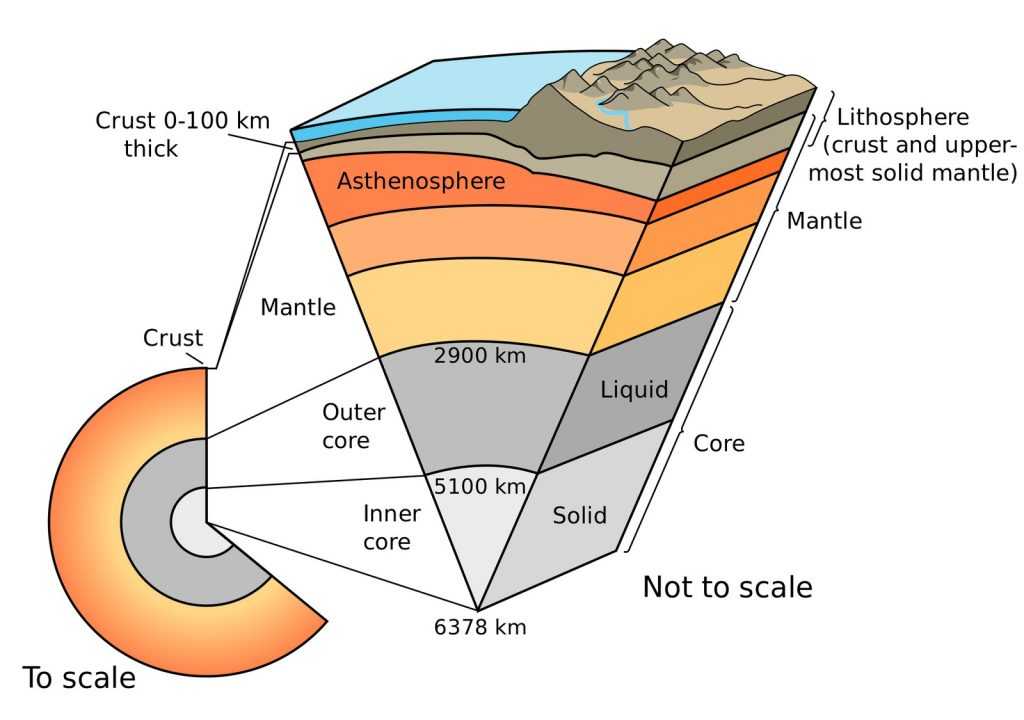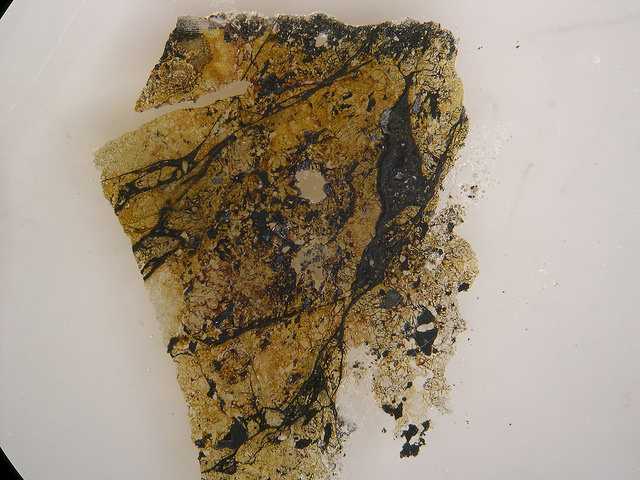Most Abundant Mineral in the Earth
Posted on: Dec 19, 2019, · 5 min read.
Introduction
Minerals are mostly substances formed naturally in the Earth. They have a definite chemical composition and structure. Overall there are over 3000 minerals we knowns nowadays, and some are rare and precious such as gold and diamond(actually diamonds are likely the most common gem in nature), while others are more ordinary, such as quartz.
When we talk about the minerals found on the Earth we are talking about those that are found in the Earth's crust, the only part of the Earth really open for us to explore. The crust is a thin layer (up to 100km thick) under which lies the mantle and the upper (liquid) and lower (solid) core.
[caption id="attachment_5744" align="aligncenter" ]
 The structure of the Earth, When we talk about the minerals found on the Earth we are talking about those that are found in the Earth's crust, the only part of the Earth really open for us to explore. The crust is a thin layer (up to 100km thick) under which lies the mantle and the upper (liquid) and lower (solid) core.[/caption]
The structure of the Earth, When we talk about the minerals found on the Earth we are talking about those that are found in the Earth's crust, the only part of the Earth really open for us to explore. The crust is a thin layer (up to 100km thick) under which lies the mantle and the upper (liquid) and lower (solid) core.[/caption]
Like all substances, minerals are composed of elements. There are only about a hundred elements in our earth, and they are the basic building blocks of everything around our world. They can be found either in their pure form or chemically combined with other elements to make compounds. A compound is usually two or more elements chemically joined together.
| Element name | Chemistry Symbol | Percentage by weight of the Earth’s crust (%) |
| Oxygen | O | 47 |
| Silicon | Si | 28 |
| Aluminium | Al | 8 |
| Iron | Fe | 5 |
| Calcium | Ca | 3.5 |
| Sodium | Na | 3 |
| Potassium | K | 2.5 |
| Magnesium | Mg | 2 |
| All other elements | 1 |
The elements in the Earth’s crust
The table above gives some information about the most common elements in the Earth’s crust in order of abundance. As we can conclude that almost 99% of the minerals making up the Earth’s crust are made up of just eight elements. Most of these elements are found combined with other elements as compounds. Minerals are elements or compounds that occur naturally in the Earth’s crust. Rocks are mixtures formed of minerals. Just as elements are the building blocks of minerals, so minerals form the building blocks of rocks.
Quartz could be the most common mineral of the continents
Now we all know that the Oxygen and Silicon are the most abundant elements that they two almost hold ¾ of the total element in the earth. So, their compound, the mineral SiO2 definitely become the most common mineral of the Earth's continents, which is the part of the earth that where our humans live in. Nearly all the sand in sandstone, in the deserts of the world, and on the world's riverbeds and beaches is quartz. Quartz is also the most common mineral in granite and gneiss, which make up the majority of the deep continental crust.
Sand as the main form of quartz, it is widely used and properly the most common mineral material in our daily life, almost all the buildings and the highways, roads are building use the quartz sands. And the glass we used are also made from the sands, what’s more, our CPUs, which may be the most important things in nowadays world, it’s core function is built base on the Silicon.
In Dubai, United Arab Emirates, the use of sand has been very demanding in the construction of infrastructure and creating new islands. They used up their own reserves and now import most of their sand from Australia. There have been three projects to create artificial islands needing more than 835 million tonnes of sand, which cost more than US$26 billion.
Manufactured sand (M sand) is sand made from rock by artificial processes, usually for construction purposes in cement or concrete. It differs from river sand by being more angular, and has somewhat different properties. To learn more about sand making, you can see our Silica sand wash plant and beach sand mining process.
Most Common Mineral of the Crust
[caption id="" align="aligncenter" ] Earth's crust occupies less than 1% of Earth's volume.[/caption]
Earth's crust occupies less than 1% of Earth's volume.[/caption]
Feldspar is called a group of minerals only for the convenience of geologists. The seven major feldspars blend smoothly into each other, and their boundaries are arbitrary. Saying "feldspar" is like saying "chocolate-chip cookies," because the name embraces a range of recipes. If you consider it as one mineral, feldspar is the most common mineral on earth, and quartz is the second most common. This is especially true when you consider the whole crust (continental plus oceanic).
In chemical terms, feldspar is XZ4O8, where X is a mixture of K, Ca, and Na, and Z is a mixture of Si and Al. To the average person, even the average rockhound, feldspar looks pretty much the same no matter where it falls in that range. Also, consider that the rocks of the seafloor, the oceanic crust, have almost no quartz at all but abundant amounts of feldspar. So in the Earth's crust, feldspar is the most common mineral.
Most Common Mineral of Earth
The thin, rocky crust makes up only a small portion of the Earth—it occupies just 1% of its total volume and 0.5% of its total mass. Underneath the crust, a layer of hot, solid rock known as the mantle makes up about 84% of the total volume and 67% of the total mass of the planet. The Earth's core, which accounts for 16% of its total volume and 32.5% of its total mass, is liquid iron and nickel, which are elements and not minerals.
Drilling past the crust presents major difficulties, so geologists study how seismic waves behave in the mantle in order to understand its composition. These seismic studies show that the mantle itself is divided into several layers, the largest of which is the lower mantle.
The lower mantle ranges from 660 to 2700 km in depth and accounts for roughly half of the planet's volume. This layer is made up mostly of the mineral bridgmanite, a very dense magnesium iron silicate with the formula (Mg,Fe)SiO3.
[caption id="" align="aligncenter" ]
 A section of meteorite that landed in Australia in 1879. Bridgmanite was formed and trapped in the dark veins from the intense, quick shock of asteroid collisions. Image credit: Tschauneret et al, Science (2014).[/caption]
A section of meteorite that landed in Australia in 1879. Bridgmanite was formed and trapped in the dark veins from the intense, quick shock of asteroid collisions. Image credit: Tschauneret et al, Science (2014).[/caption]
Bridgmanite makes up around 38% of the planet's total volume, meaning it is by far the most abundant mineral on Earth. Although scientists have known about its existence for years, they had not been able to observe, analyze, or name the mineral because it does not (and can not) rise from the depths of the lower mantle to the surface of the Earth. It was historically referred to as perovskite, as the International Mineralogical Association does not allow formal names for minerals unless they have been examined in person.
That all changed in 2014 when mineralogists found bridgmanite in a meteorite that had crashed into Australia in 1879. During impact, the meteorite was subjected to temperatures in excess of 3600 degrees F and pressures around 24 gigapascal, similar to what is found in the lower mantle. Bridgmanite was named in honor of Percy Bridgman, who won a Nobel Prize in 1946 for his research of materials at very high pressures.
In the end
What is the most abundant mineral in the earth? the answer could be quartz, feldspar, or bridgmanite. It all depends on how we classify minerals and what part of the Earth we're talking about. If you see the words "continent" or "continental crust" in the question, then the answer is most likely quartz. If we are talking about the mineral in crust, then the answer is probably feldspar. If we consider the entire earth into consideration, then the answer is bridgmanite.
Some useful links
- Minerals, elements and the Earth’s crust https://www.rsc.org/education/teachers/resources/jesei/minerals/students.htm
- Crust (geology) in wikipedia. https://en.wikipedia.org/wiki/Crust_(geology)
- Crust (geology) in ScienceDaily https://www.sciencedaily.com/terms/crust_(geology).htm
- Bridgmanite https://www.mindat.org/min-45900.html
- Earth’s most abundant mineral finally has a name https://www.anl.gov/article/earths-most-abundant-mineral-finally-has-a-name
- What Is the Most Common Mineral? https://www.thoughtco.com/what-is-the-most-common-mineral-1440960
- https://www.gemsociety.org/article/are-diamonds-really-rare/
- PEDUZZI, Pascal (April 2014). "Sand, rarer than one thinks". https://archive-ouverte.unige.ch/unige:75919
